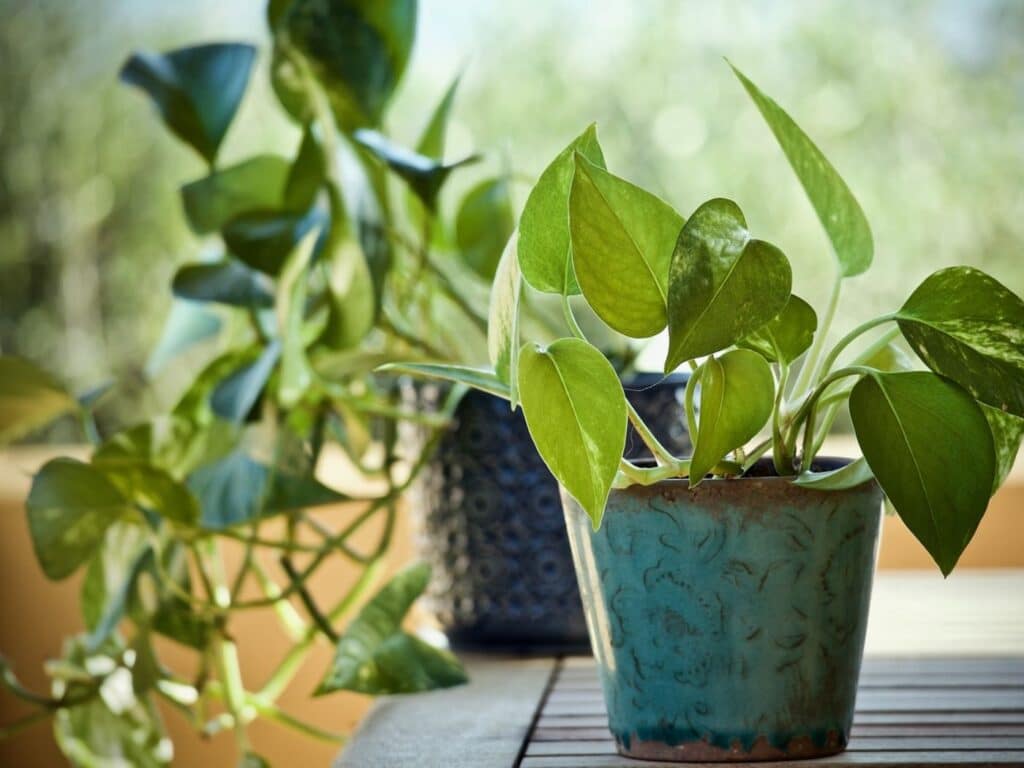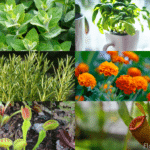Discovering your pothos leaves turning yellow can be disheartening, especially when you’ve put time and effort into caring for your plant. This common issue among houseplants signals that your pothos is unhappy and needs a bit of extra attention.
But don’t worry, you’re not alone in this. Many plant enthusiasts face this challenge and, with the right knowledge, you can easily turn things around.
Understanding why pothos leaves turn yellow is the first step towards nurturing your plant back to health. Whether it’s due to watering habits, light conditions, or nutrient deficiencies, identifying the root cause is crucial.
This article will guide you through the possible reasons behind the yellowing leaves and offer practical solutions to revive your pothos. Let’s embark on this journey together and bring back the lush, vibrant greenery of your beloved plant.
Understanding Pothos Plant Care
The Natural Habitat of Pothos Plants
Pothos plants hail from the understory of tropical forests, where dappled sunlight and high humidity reign. These conditions form the blueprint for their care at home. They thrive in indirect light and relish in moisture, but too much love in the form of water can spell trouble.
Optimal Conditions for Healthy Pothos Growth
Creating the perfect environment for your pothos doesn’t require a green thumb, just a bit of know-how. Bright, indirect light mimics their native habitat, preventing the leaves from turning yellow.
Watering poses a fine balance; the soil should dry out slightly between watering sessions. Remember, soggy roots are a no-go. For nutrition, a monthly dose of balanced, water-soluble fertilizer during the growing seasons keeps them lush and vibrant.
Finally, maintaining a bit of humidity will make them feel right at home. A pebble tray or occasional misting does the trick, and suddenly, you’re not just keeping a plant alive; you’re letting it thrive.
Common Causes of Yellowing Leaves in Pothos

Overwatering and Its Impacts
Overwatering is a ticket to trouble for your pothos plants. Excess water chokes the roots, preventing them from absorbing oxygen effectively. This situation can swiftly lead to root rot, a common cause of yellowing leaves. To keep your pothos happy, aim for moist, not soggy, soil conditions.
Underwatering Stress
Conversely, giving your pothos too little water can also cause yellow leaves. Underwatering makes the soil too dry, forcing your plant to dehydrate and its leaves to turn yellow as a distress signal. Establishing a consistent watering schedule that keeps the soil lightly moist is the key to avoiding this issue.
Light Exposure Issues
Too much direct sunlight can scorch your pothos, leading to yellow leaves, while too little light makes them pale and yellow. Pothos plants thrive in bright, indirect sunlight. Placing them near a window that gets filtered light is an ideal setup for maintaining vibrant green leaves.
Nutrient Deficiencies and Imbalances
Yellow leaves can also indicate a lack of essential nutrients or nutrient imbalances. Pothos plants require a balanced mix of nutrients, and deficiencies in nitrogen, magnesium, or iron are usual suspects for yellowing foliage. Applying a balanced, water-soluble fertilizer every 4-6 weeks during the growing season keeps these deficiencies at bay.
Temperature Fluctuations and Extremes
Pothos plants dislike dramatic changes in temperature. Cold drafts or too much heat can stress them out, causing leaves to turn yellow. Maintaining a steady temperature between 65°F and 85°F ensures your pothos remains stress-free and maintains its lush greenery.
Diagnosing Yellow Leaves on Your Golden Pothos
Inspecting Soil Moisture Levels
Checking your plant’s soil moisture is like being a detective; it’s essential for uncovering clues about your golden pothos’ health. Overwatered pothos often show yellow leaves as a distress signal.
If the soil feels soggy or wet several days after watering, you’ve likely found the culprit. Similarly, too dry soil can stress the plant, leading to yellow foliage.
Aim for a happy medium, where the soil is moist but not waterlogged. A simple finger test, inserting it into the soil up to the first knuckle, can give you a good moisture reading.
Evaluating Lighting Conditions
Golden pothos thrive in bright, indirect light but can tolerate lower light conditions. However, too much direct sunlight can scorch the leaves, turning them yellow, while too little light can make them lose their vibrant green color and become faded or yellow.
Find a spot that gets plenty of indirect sunlight, or consider using sheer curtains to filter direct sunlight. Remember, the goal is to mimic the dappled sunlight of a pothos’ natural rainforest habitat.
Checking for Signs of Pests or Disease
Pests and diseases can be sneaky, often going unnoticed until they’ve caused significant damage. Common culprits like spider mites, mealybugs, and fungal infections can turn pothos leaves yellow. Look closely at the leaves, especially the undersides, for tiny bugs or unusual spots.
Catching these issues early can make a big difference. Keep an eye out for anything out of the ordinary and take action promptly by isolating affected plants and treating them with appropriate remedies.
Treatment and Prevention Strategies
You’ve learned why your pothos may be turning yellow; now let’s tackle how to keep those leaves green and thriving. It’s all about the right care and balance.
Adjusting Watering Habits
First off, let’s talk H2O. Your pothos craves attention but plays it cool with water. Overdoing it leads to waterlogged roots, a big no-no. Aim for a just-right approach by checking the soil’s top inch – if it’s dry, it’s time to water.
On the flip side, underwatered pothos send out an S.O.S. with drooping, yellow leaves. Strike a balance by establishing a consistent watering routine, adjusting for seasonal changes. Remember, less is more during the cooler months.
Optimizing Light and Temperature
Next up, light and warmth. Your pothos isn’t a sunbather but dislikes dim corners too. Bright, indirect light hits the sweet spot for keeping those leaves glossy. If your plant’s current spot is too sunny, consider sheer curtains to filter the light.
As for temperature, keep it cozy. Pothos prefer a stable environment between 65-85°F (18-29°C). Sudden temperature changes? Not a fan. Keep them away from drafts and heating or cooling vents to avoid stress.
Modifying Fertilization Routines
Lastly, let’s chat nutrients. Too much of a good thing can be bad, especially with fertilizer. Overfertilization leads to salt buildup, causing leaf burn and yellowing. Go light with a balanced, water-soluble fertilizer during the growing season (spring and summer), tapering off in fall and ceasing in winter. Think of it as the plant’s diet plan—moderation keeps it healthy and happy.
Follow these strategies, and your pothos won’t just survive; it’ll thrive, flaunting those lush, green leaves all year round. Keep the balance, and watch your green friend flourish.
When to Seek Professional Help
Persistent Problems Despite Interventions
If you’ve played the role of plant doctor, adjusting water, light, and soil, yet your pothos still sports yellow leaves, it may well be time to call in the cavalry. Sometimes, despite your best efforts, the issue persists, indicating a potentially deeper problem.
If the usual fixes haven’t worked after a couple of weeks, seeking advice from a professional horticulturist or a plant expert at your local nursery can provide a new perspective. They possess the skills to diagnose issues that aren’t always apparent to the untrained eye, such as root rot or a specific pest infestation.
Identifying When It’s More Than Just Yellow Leaves
Yellow leaves on a pothos can sometimes be the tip of the iceberg, hinting at a more serious issue beneath the surface.
If you observe other worrying signs, like a significant drop in new growth, leaves falling off, or black and mushy roots, these are clear signals it’s not just a simple case of yellow leaves. Diseases and pests can invade without much notice, and by the time they’re visible, they may well have already caused significant damage.
In scenarios where the plant’s overall health declines rapidly, consultation with a professional can save your pothos and bring it back to its vibrant self. They’re equipped to offer solutions beyond what home remedies and internet advice can provide, potentially saving your plant from an untimely demise.
Frequently Asked Questions
Why are my pothos plant leaves turning yellow?
Overwatering, underwatering, excessive light, nutrient deficiencies, and temperature fluctuations can cause pothos leaves to turn yellow. Ensuring conditions mimic the plant’s natural habitat is crucial for its health.
How can I tell if my pothos is overwatered or underwatered?
Check the soil moisture; if it’s soggy, it may be overwatered. Dry, hard soil indicates underwatering. Both conditions can lead to yellowing leaves.
What type of light is best for pothos plants?
Pothos plants thrive in bright, indirect sunlight. Too much direct sunlight can scorch their leaves, while too little light can weaken them and cause yellowing.
Can pest infestations cause yellow leaves in pothos plants?
Yes, pests such as spider mites, mealybugs, and scale insects can stress the plant, leading to yellow leaves. Regular monitoring for pests is important.
When should I seek professional help for my pothos plant?
If you’ve adjusted watering, lighting, and checked for pests but the yellowing persists, it might be time to consult a professional. Persistent problems could indicate diseases or pest infestations that require expert intervention.
How can nutrient deficiencies affect my pothos plant?
Nutrient deficiencies, especially in nitrogen, can lead to yellowing leaves. Providing a balanced, water-soluble fertilizer as recommended can help maintain healthy leaf coloration.
Is it normal for pothos leaves to turn yellow occasionally?
A few yellow leaves are normal as the plant ages. However, widespread or sudden yellowing can be a sign of stress or improper care.







